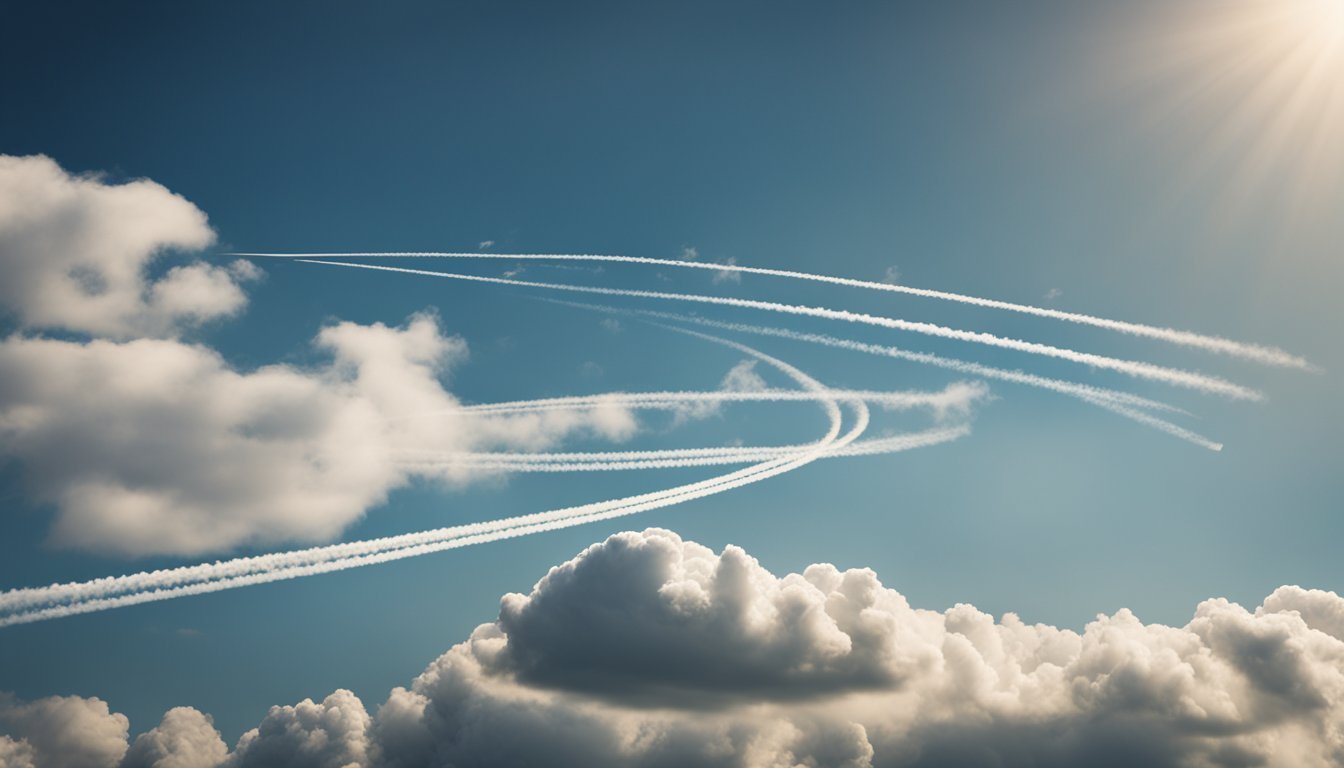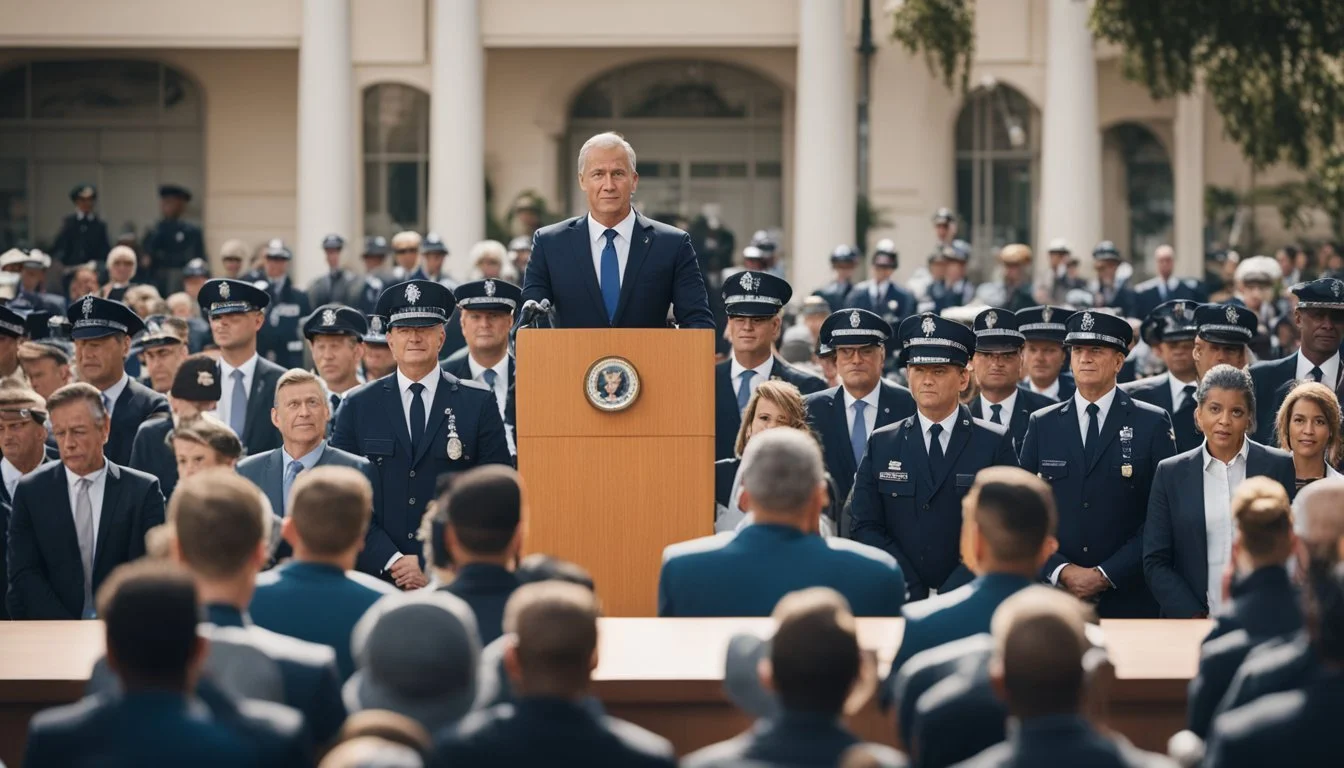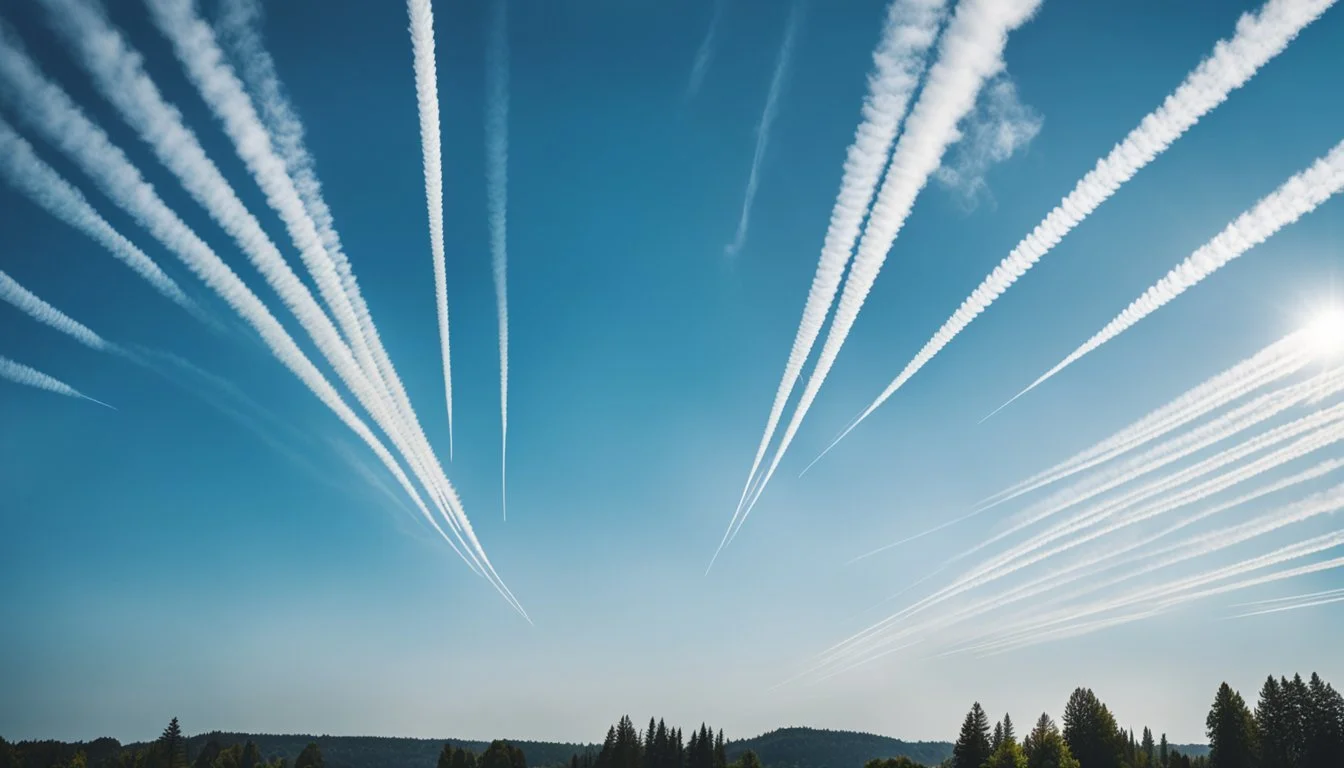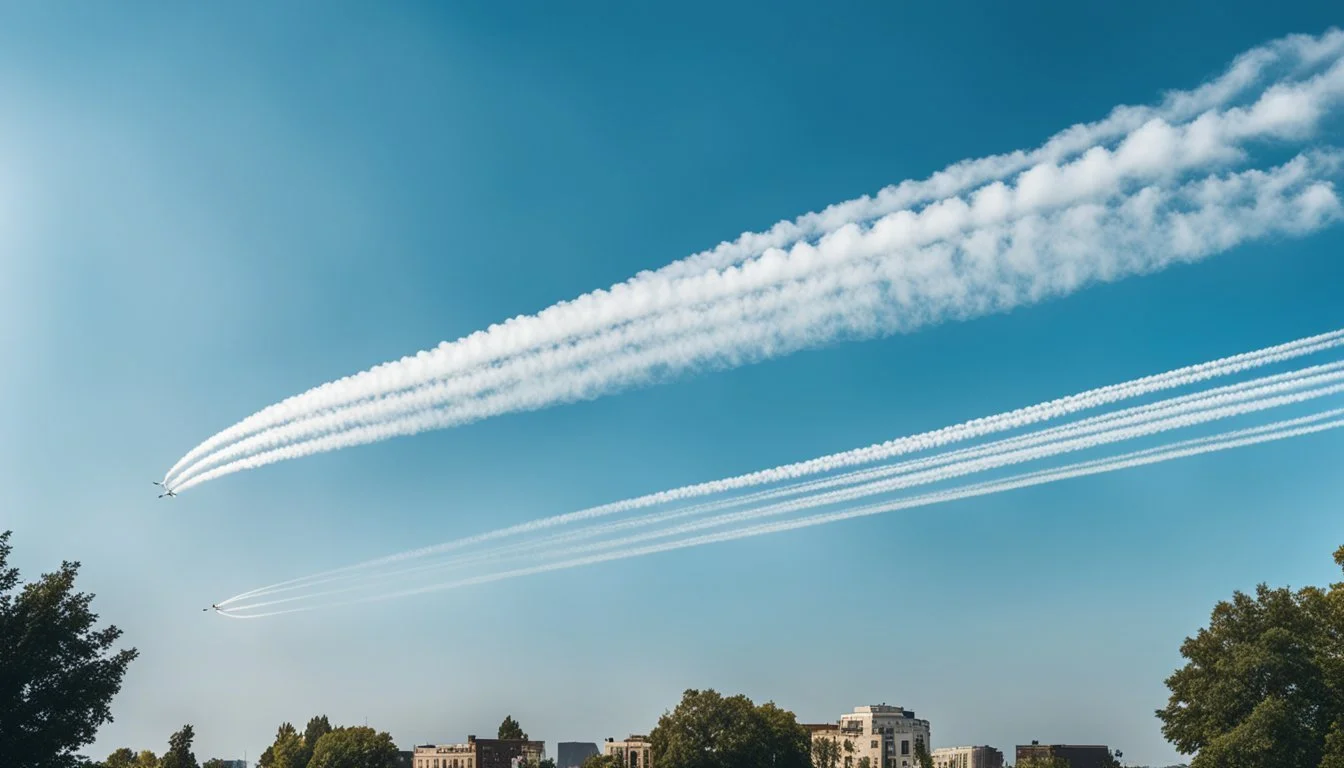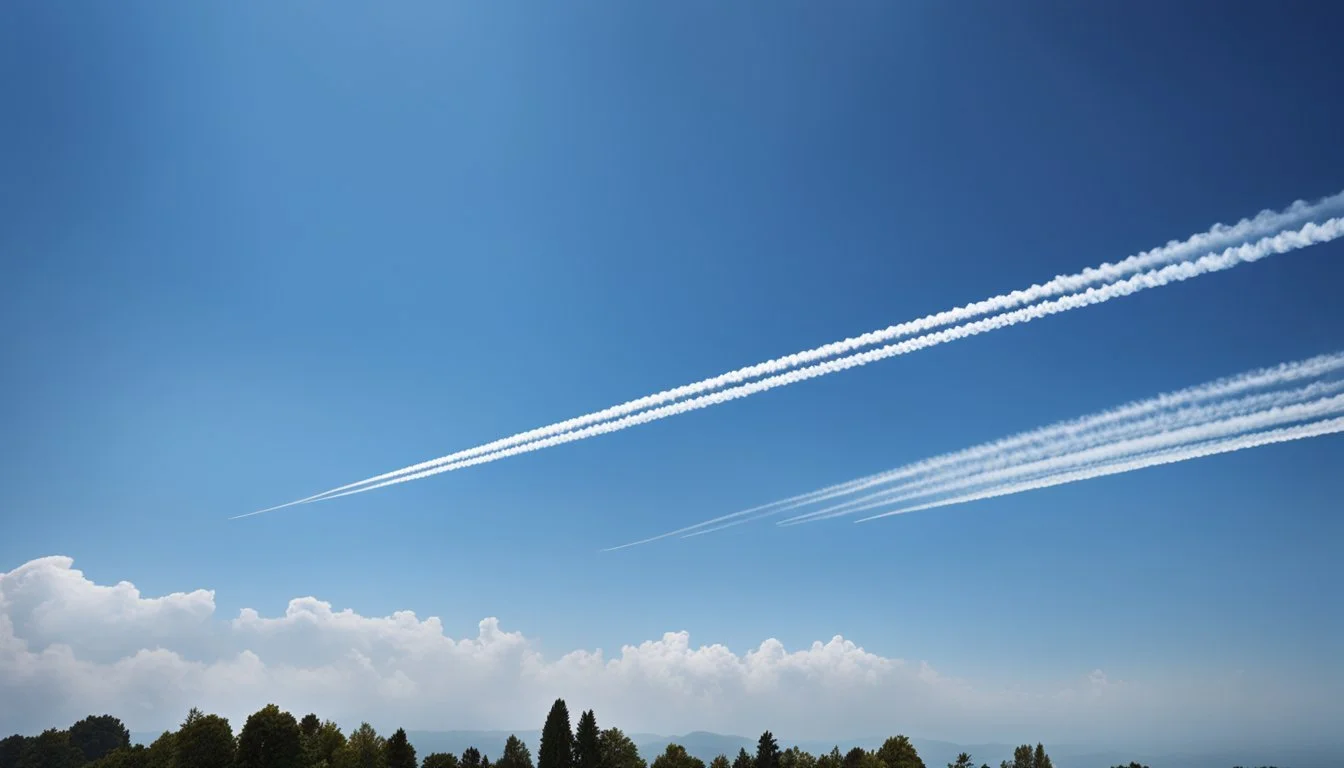Skylines or Sinister Signs? Clearing the Air on the Chemtrails Controversy
Chemtrails have become a prominent topic in conspiracy circles, sparking debates about their existence and purpose. The theory suggests that the white trails left by aircraft in the sky are not ordinary condensation trails, but rather chemical or biological agents deliberately sprayed for sinister purposes.
Scientific consensus overwhelmingly rejects the existence of chemtrails, classifying them as a baseless conspiracy theory. Atmospheric scientists and geochemists have repeatedly debunked these claims, explaining that the visible trails are simply condensation from aircraft engines, known as contrails.
Despite the lack of evidence supporting chemtrail claims, the theory persists. This highlights the complex relationship between scientific understanding and public perception. As with many conspiracy theories, chemtrails tap into broader concerns about environmental issues and government transparency, contributing to their continued popularity among some groups.
Chemtrails Versus Contrails
Contrails and chemtrails are often confused, but represent very different phenomena. Contrails are a natural byproduct of aircraft engines, while chemtrails stem from conspiracy theories about deliberate chemical spraying.
Defining the Terms
Contrails are condensation trails that form behind aircraft at high altitudes. They consist of water vapor from engine exhaust that freezes into ice crystals in the cold upper atmosphere.
Chemtrails, on the other hand, refer to a conspiracy theory. Proponents claim certain contrails are actually chemical or biological agents intentionally sprayed by aircraft for sinister purposes.
This theory lacks scientific evidence. No proof exists of aircraft equipped for or engaging in widespread chemical spraying.
Scientific Explanations for Contrails
Contrails form when hot, humid exhaust from aircraft engines mixes with cold atmospheric air. At high altitudes where temperatures are below -40°C, the water vapor quickly condenses and freezes.
Contrail persistence depends on atmospheric conditions. In dry air, they dissipate quickly. In humid air, ice crystals grow by attracting ambient moisture, creating long-lasting contrails.
Wind shear can spread contrails into thin cirrus clouds. Criss-cross patterns result from multiple aircraft paths, not coordinated spraying.
Assertions of Chemtrails Proponents
Chemtrail believers point to contrails that persist longer, appear thicker, or exhibit unusual colors as evidence of chemical spraying. They claim these differ from normal contrails.
Some assert chemtrails contain metals, biological agents, or mind-control substances. Proposed motives include weather modification, population control, and geoengineering.
However, scientific testing of air, water, and soil samples has never shown evidence of widespread chemical spraying from aircraft. Meteorologists and aviation experts consistently refute chemtrail claims.
Historical Context of Chemtrail Theories
Chemtrail conspiracy theories emerged in the late 20th century, rooted in Cold War era concerns about secret government programs and chemical warfare. These theories gained traction through misinterpretations of historical events and government activities.
Development of the Theories
Chemtrail theories began to spread widely in the 1990s. Believers claimed that the contrails left by aircraft were actually chemical or biological agents deliberately sprayed for sinister purposes. The internet played a crucial role in popularizing these ideas. Online forums and websites allowed proponents to share photos, videos, and anecdotes they considered evidence of chemtrails.
Some theorists pointed to declassified documents about past weather modification experiments as proof of ongoing secret programs. Others linked chemtrails to alleged population control efforts or climate engineering schemes.
Cold War and Chemical Warfare
Cold War tensions fueled suspicions about government secrecy and unconventional weapons. In the 1950s and 1960s, the U.S. military conducted experiments involving the spraying of zinc cadmium sulfide as a simulant for biological weapons. These tests, while not directly related to chemtrails, later became fodder for conspiracy theorists.
The development of chemical and biological weapons during this period also contributed to public fears. Incidents like the unintentional release of VX nerve gas in Utah in 1968 heightened concerns about the government's handling of dangerous substances.
Declassified documents revealed various Cold War-era research programs, including cloud seeding experiments. While these programs were often limited in scope, they provided a historical basis for some of the claims made by chemtrail theorists.
Assessing the Evidence for Chemtrails
Scientific studies and expert analyses have thoroughly examined the claims surrounding chemtrails. Multiple investigations have found no substantive evidence to support their existence.
Scientific Consensus
A comprehensive survey published in Environmental Research Letters polled 77 atmospheric scientists and geochemists. The results showed overwhelming agreement that chemtrails are not a real phenomenon.
These experts concluded that the visible trails behind aircraft are simply condensation from engine exhaust. They form when hot, humid air from jet engines mixes with colder surrounding air.
The scientists found no evidence of secret chemical spraying programs. They emphasized that well-understood physical and chemical processes explain the formation of contrails.
Research and Data-Based Counterarguments
The Environmental Protection Agency (EPA) has investigated chemtrail claims and found no basis for them. The agency's analysis of air, water, and soil samples detected no unusual levels of chemicals.
Atmospheric scientists at the University of California have conducted extensive studies on contrail formation. Their research demonstrates that contrails result from normal aircraft operations, not deliberate spraying.
Climate researchers have examined historical weather records and satellite imagery. This data shows no significant changes in contrail patterns over time that would indicate a secret spraying program.
Multiple independent analyses have failed to detect any evidence of harmful chemicals in the environment linked to alleged chemtrail activity.
Government and Authority Response
Official statements and actions from government agencies have consistently refuted chemtrail claims. Environmental and military organizations have provided scientific explanations for contrails while denying any secret spraying programs.
Official Statements
The U.S. Environmental Protection Agency (EPA) has explicitly addressed chemtrail theories. They state there is no evidence of deliberate chemical or biological agent releases from aircraft. NASA has also weighed in, explaining that contrails are simply water vapor condensation from jet engines.
The U.S. Air Force categorically denies involvement in any chemtrail program. They emphasize that contrails are a natural byproduct of aircraft exhaust under certain atmospheric conditions. President Joe Biden's administration has not issued any statements specifically about chemtrails, maintaining the government's long-standing position.
Military and Environmental Agencies
Military and environmental organizations have provided detailed explanations of contrail formation. The U.S. Air Force offers educational materials on their website about the science behind contrails. They stress these are not chemical spraying operations.
The EPA collaborates with other agencies to monitor air quality nationwide. Their data shows no evidence of widespread chemical dispersal from aircraft. Harvard researchers have conducted studies on contrail effects on climate, finding no signs of deliberate chemical release programs.
The Carnegie Institute has analyzed contrail composition, confirming they consist of ice crystals and water vapor. These findings align with official government positions on the nature of aircraft exhaust trails.
Media and Social Influence
The spread of chemtrail theories has been significantly amplified by digital platforms and high-profile figures. These factors have played a crucial role in shaping public perception and fueling ongoing debates about the existence of chemtrails.
Role of the Internet and Social Media
Social media platforms like Facebook, TikTok, and Twitter have become hotbeds for chemtrail discussions. These sites allow rapid sharing of images, videos, and personal anecdotes related to alleged chemtrail sightings.
Online forums and groups dedicated to chemtrail theories have formed tight-knit communities of believers. These spaces often echo and reinforce existing beliefs, creating information bubbles.
Misinformation and false news about chemtrails spread quickly on social networks. Fact-checking efforts struggle to keep pace with the volume of inaccurate content being shared.
The internet has made it easier for people to access and share pseudo-scientific explanations for contrails, often misinterpreting normal atmospheric phenomena.
Publicity by High-Profile Individuals
Some celebrities and public figures have lent credibility to chemtrail theories by discussing them on their platforms. Their large followings can amplify these ideas to millions.
Conspiracy theorists like Alex Jones have promoted chemtrail beliefs through radio shows, websites, and social media accounts. This exposure has brought the concept to wider audiences.
Politicians and media personalities occasionally reference chemtrails, intentionally or not. These mentions, even if skeptical, keep the topic in public discourse.
Some alternative health advocates incorporate chemtrail beliefs into their teachings about environmental toxins. This association can lend a veneer of legitimacy to the theory.
Health and Environmental Considerations
Scientific consensus rejects claims of widespread atmospheric spraying programs. Concerns about potential health and environmental impacts stem from misunderstandings about normal aircraft contrails.
Potential Risks Associated with Real Atmospheric Spraying
Actual cloud seeding operations use silver iodide in small quantities. Studies have found minimal environmental impacts from these limited, regulated activities. The Environmental Protection Agency monitors air quality and has not detected evidence of large-scale atmospheric spraying programs.
Climate scientists study how contrails may influence regional temperatures, but find no link to deliberate geoengineering schemes. Aircraft emissions do contribute to air pollution and climate change through normal fuel combustion, unrelated to alleged spraying.
Chemtrails as an Explanation for Illness
No scientific evidence supports chemtrails as a cause of health problems. Chronic illnesses attributed to chemtrails by some have other documented causes. Environmental and medical experts have debunked claims of mass poisoning via aircraft spraying.
Misinterpreting normal contrails as toxic chemicals can lead people to ignore real health threats. Air pollution from industry, vehicles, and other sources poses genuine risks that warrant attention and action.
Focusing on a debunked conspiracy theory may distract from addressing actual environmental and public health challenges. Reputable health organizations emphasize evidence-based approaches to investigating and treating illnesses.
Psychology Behind the Beliefs
Conspiracy beliefs often stem from cognitive biases and can become deeply entrenched. People may cling to these ideas due to a need for control or to explain complex events.
Cognitive Bias and Conspiracy Belief
Confirmation bias plays a key role in conspiracy thinking. Believers tend to seek out information that supports their views while dismissing contradictory evidence. Pattern recognition gone awry can lead people to see connections where none exist.
A survey of chemtrail believers found many scored high on measures of magical thinking. This tendency to attribute causal relationships between unrelated events fuels conspiracy theories.
Some theorists view skepticism of official narratives as a form of intellectual superiority. This belief in hidden knowledge can boost self-esteem and create a sense of community among like-minded individuals.
Challenges in Changing Mindsets
Deeply entrenched beliefs resist change. Conspiracy theorists often view attempts to disprove their ideas as further evidence of a cover-up. This defensiveness makes rational debate difficult.
Cognitive dissonance occurs when new information conflicts with existing beliefs. Rather than update their views, many double down on conspiracy theories to avoid this mental discomfort.
Social media echo chambers reinforce fringe ideas. Algorithms promote content similar to what users already believe, creating a feedback loop of misinformation.
Addressing conspiracy beliefs requires empathy and patience. Building trust and encouraging critical thinking skills can help over time.
Weather Modification and Geoengineering
Weather modification and geoengineering are complex topics that intersect with atmospheric science and climate research. While some concepts are rooted in legitimate scientific inquiry, others have become the subject of unsubstantiated claims and conspiracy theories.
Separating Facts from Fiction
Atmospheric scientists and geochemists agree that "chemtrails" are not real. The visible trails behind aircraft are actually contrails - condensation formed from engine exhaust in certain atmospheric conditions. These contrails do not contain harmful chemicals or pose health risks.
Weather modification techniques like cloud seeding do exist. This involves introducing particles into clouds to induce precipitation. However, its effectiveness and environmental impacts remain debated among researchers.
Claims of secret large-scale atmospheric programs lack credible evidence. Atmospheric spraying for climate control is not currently practiced by governments or organizations.
Legitimate Research in Geoengineering
Harvard researchers and other scientists are studying potential geoengineering approaches to address climate change. These include:
Stratospheric aerosol injection: Reflecting sunlight by adding particles to the upper atmosphere
Marine cloud brightening: Increasing cloud reflectivity over oceans
Carbon dioxide removal: Capturing CO2 from the air
These concepts remain largely theoretical. Implementing them would require extensive testing and international agreements. Potential risks and unintended consequences are major concerns.
Climate scientists emphasize that reducing greenhouse gas emissions remains the primary focus for addressing climate change. Geoengineering research is considered a potential supplement, not a replacement for emissions reduction efforts.
The Impact of Chemtrail Theories
Chemtrail conspiracy theories have influenced public discourse and policy debates, while spreading misinformation that can lead to real-world consequences.
Influence on Public Opinion and Policy
Chemtrail theories have gained traction among certain segments of the population. A significant minority of people believe in the existence of secret large-scale atmospheric programs. This belief has led to increased skepticism towards government agencies and scientific institutions.
Some politicians have addressed chemtrail concerns in official capacities. In 2014, an Arizona state senator hosted a public meeting to discuss the issue. While no policy changes resulted, the event highlighted how these theories can enter mainstream political discourse.
Environmental groups have reported that chemtrail beliefs sometimes distract from legitimate climate change discussions. Conspiracy proponents may dismiss actual environmental concerns as government cover-ups.
Consequences of Disinformation
The spread of chemtrail misinformation can have tangible effects. Some individuals have reported anxiety or health concerns related to perceived chemtrail exposure. This has led to unnecessary medical visits and treatments in some cases.
PolitiFact has rated chemtrail claims as "Pants on Fire!" - their designation for completely false statements. Despite this, the persistence of these theories demonstrates the challenges of combating online misinformation.
Military and aviation personnel have faced harassment from chemtrail believers. This has led to increased security measures at some facilities and diverted resources to address unfounded concerns.
Fact-checking organizations and scientists have spent considerable time and effort debunking chemtrail claims. This takes focus away from addressing real environmental and health issues.

